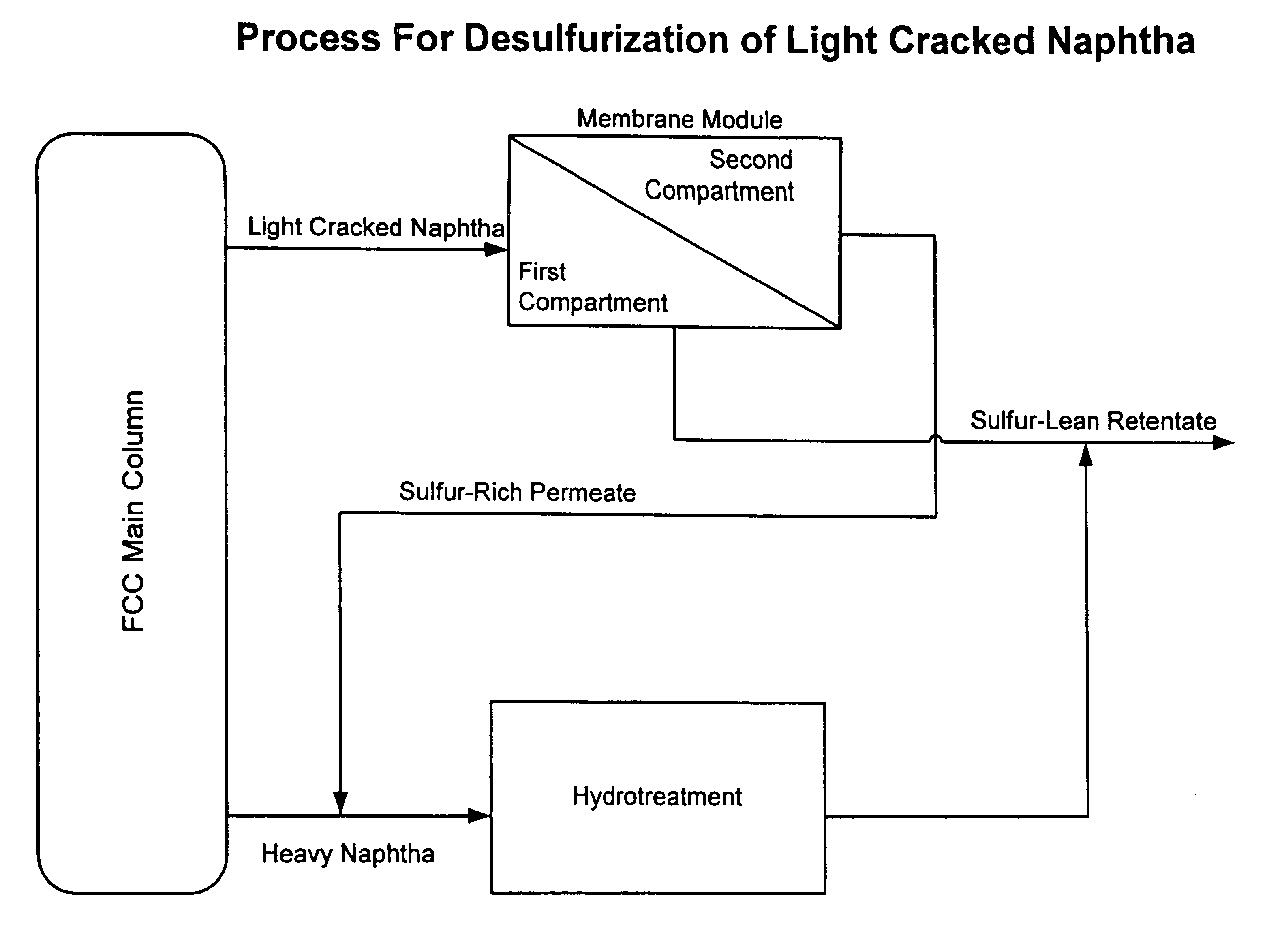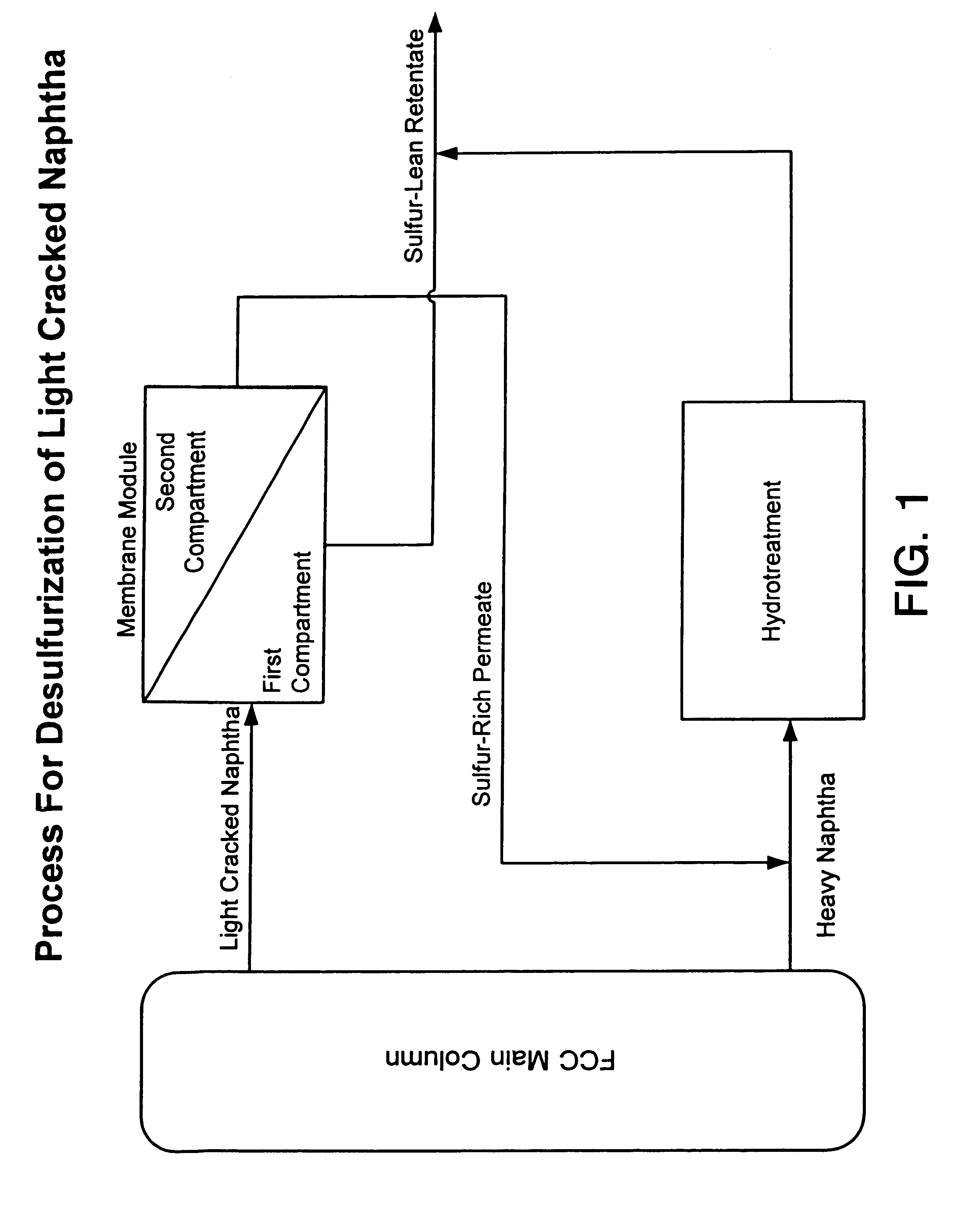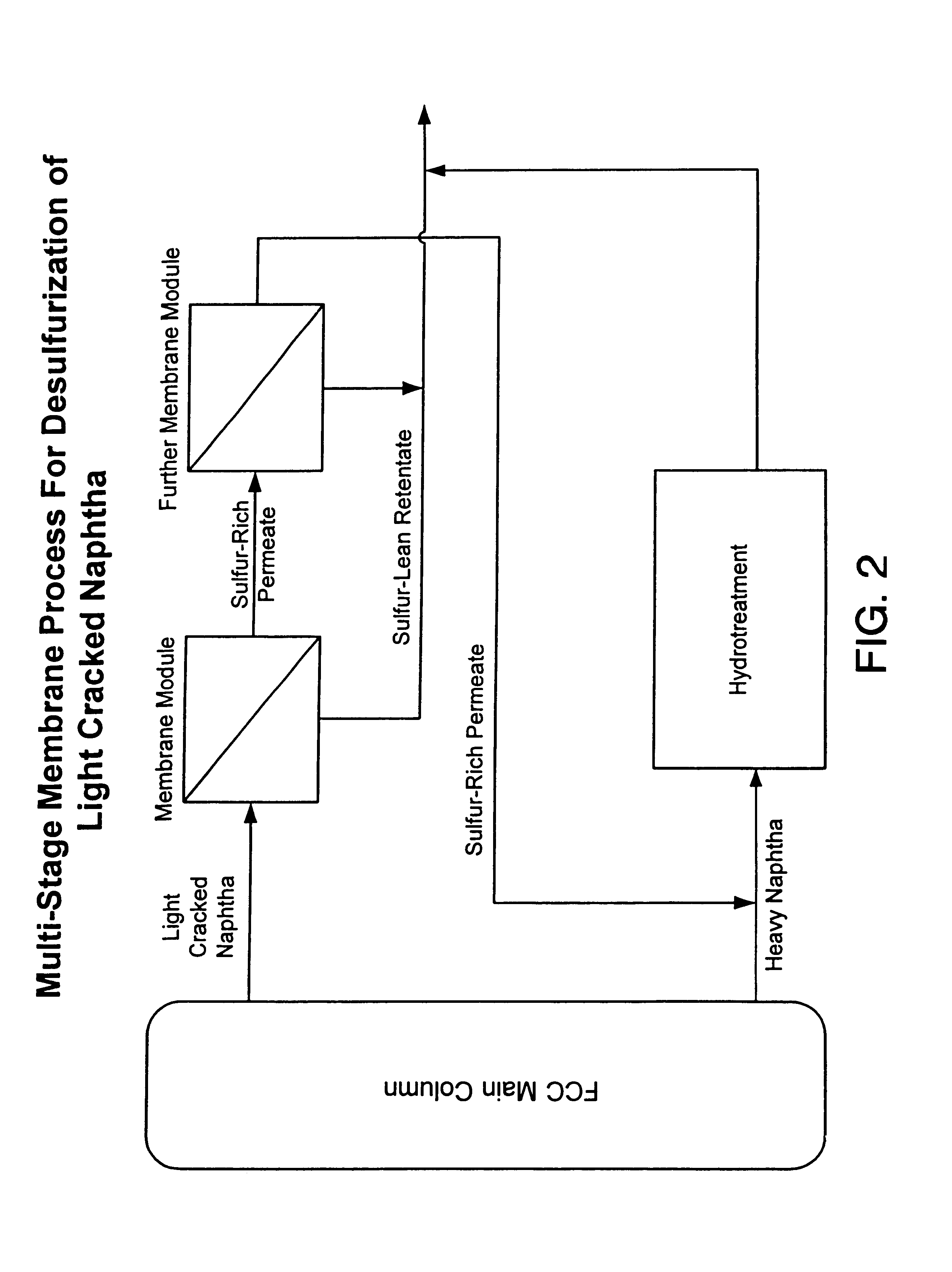Membrane process for separating sulfur compounds from FCC light naphtha
a technology of sulfur compounds and membranes, applied in chemical/physical processes, hydrocarbon purification/separation, hydrocarbons, etc., can solve the problems of high energy consumption, high cost, and inability to achieve the proposed lowering of sulfur levels
- Summary
- Abstract
- Description
- Claims
- Application Information
AI Technical Summary
Benefits of technology
Problems solved by technology
Method used
Image
Examples
example 1
Pervaporative Process for Reducing Sulfur Content in Light Cracked Naphtha Using a Membrane System
This process is outlined in FIG. 1. Light cracked naphtha (LCN) originating from an FCC main column and containing 1990 ppm of sulfur is fed at a rate of 35 gpm into a membrane system and maintained at a pressure of 50 psig. The membrane system is composed of one spiral-wrapped membrane module. The membrane comprises a thin layer of polyvinylpyrrolidone (PVP), derived from a 0.5% aqueous PVP solution, layered on porous polyvinylidenefluoride. The permeate side of the membrane module is held under vacuum at a pressure of 50 mm Hg. Sulfur-rich permeate vapor exits the membrane system and is condensed with a chiller operating at 80.degree. F. The liquid is combined with heavy cracked naphtha (HCN) derived from the FCC main column, and the mixture is processed by conventional hydrotreating. The sulfur-lean retentate exiting the membrane system, containing about 120 ppm sulfur, is combined w...
example 2
Perstractive Process for Reducing Sulfur Content in Light Cracked Naphtha Using a Membrane System
Light cracked naphtha originating from an FCC main column and containing 1700 ppm sulfur is fed at a rate of 35 gpm into a membrane system at ambient pressure. The membrane system is composed of one membrane module, and the membrane has a thickness of about 50 microns and comprises Nafion.RTM. 117 supported on woven polyester. A sweep stream composed of methanol is fed to the permeate side of the membrane at a rate of 35 gpm at ambient pressure. The sulfur-rich permeate, containing about 1 weight % of sulfur, mixes with the methanol sweep stream. The resulting mixture is fed to a distillation unit in which the methanol is removed from the sulfur-rich permeate. The distilled sulfur-rich permeate is combined with heavy cracked naphtha (HCN) from the FCC main column and hydrotreated. Similarly, the sulfur-lean retentate, containing about 150 ppm sulfur and 5 weight % methanol, exiting the m...
example 3
Multi-Stage Pervaporative Process for Reducing Sulfur Content in Light Cracked Naphtha (LCN) Using a Membrane System
This process is outlined in FIG. 2. LCN originating from an FCC main column containing 1880 ppm sulfur is fed to a membrane system. The membrane system is composed of two membrane modules, a first stage membrane module and a second stage membrane module. Both modules are operated under pervaporative conditions and have a membrane comprising cellulose triacetate (CTA) mounted on porous polyvinylidenefluoride. LCN initially enters the first module on the retentate side of the membrane and sulfur-rich permeate vapor, containing about 0.5% by weight sulfur, is drawn out of the permeate side. First stage permeate vapor is condensed with a chiller and heated to a temperature of 120.degree. C. before entering the second stage membrane module on the retentate side of the membrane. As in the first stage module, the permeate from the second stage module is drawn away as a vapor ...
PUM
| Property | Measurement | Unit |
|---|---|---|
| thickness | aaaaa | aaaaa |
| thickness | aaaaa | aaaaa |
| thickness | aaaaa | aaaaa |
Abstract
Description
Claims
Application Information
 Login to View More
Login to View More - R&D
- Intellectual Property
- Life Sciences
- Materials
- Tech Scout
- Unparalleled Data Quality
- Higher Quality Content
- 60% Fewer Hallucinations
Browse by: Latest US Patents, China's latest patents, Technical Efficacy Thesaurus, Application Domain, Technology Topic, Popular Technical Reports.
© 2025 PatSnap. All rights reserved.Legal|Privacy policy|Modern Slavery Act Transparency Statement|Sitemap|About US| Contact US: help@patsnap.com



